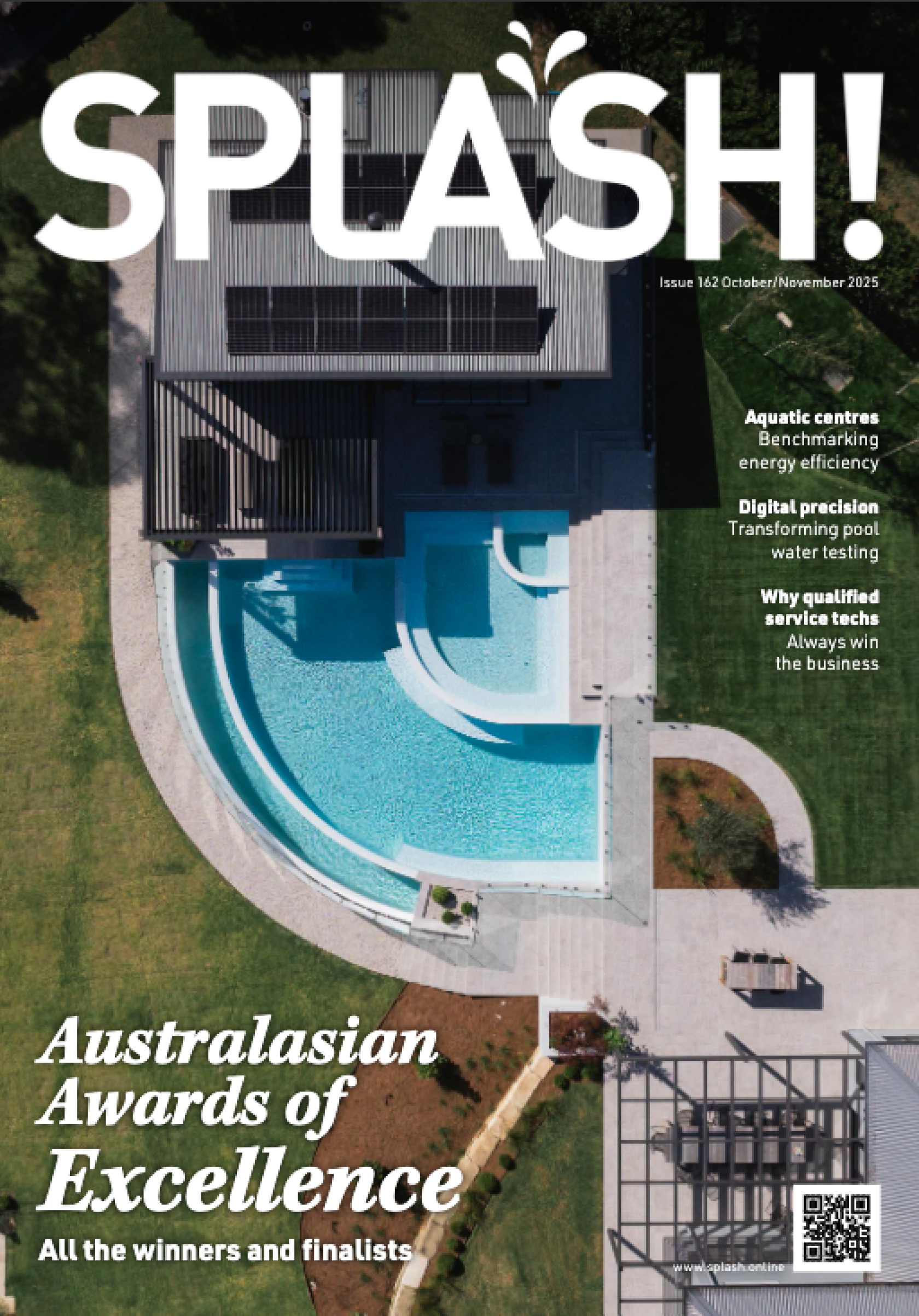The four-sided infinity pool on top of the world
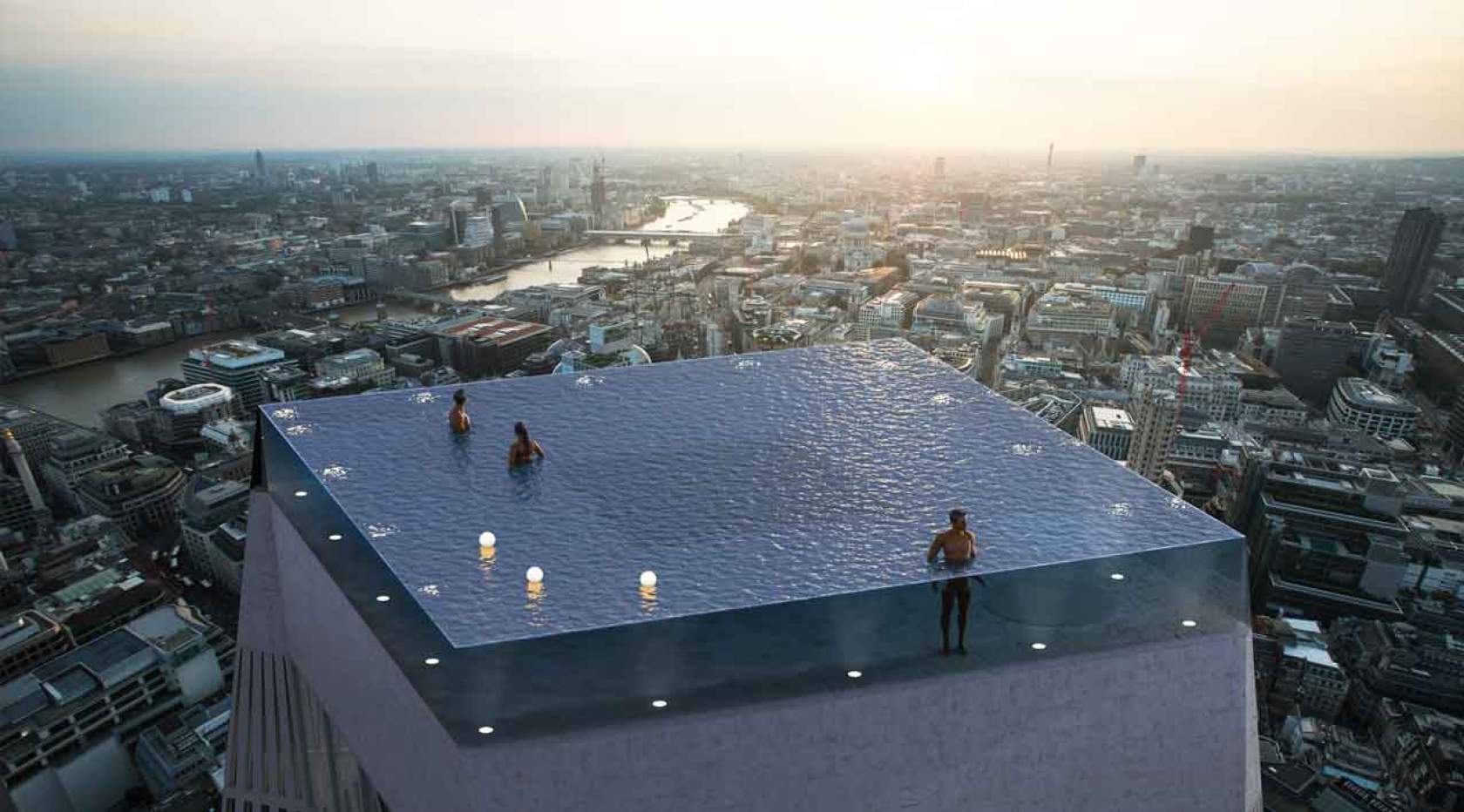
Pools on the roofs of hotels and residential buildings are the new way to make an architectural statement. You only need to think of the stunning pool at Marina Bay Sands that straddles three towers and has become the iconic symbol of Singapore.
Other examples nearer to home include the SPASA National Commercial Pool of the Year 2018, Surfside Pools’ infinity pool at the Darling Hotel overlooking Surfers Paradise.
Now there is a new potential entrant in the most spectacular infinity pool in the world. While Infinity London is still only at concept stage, the plans from Compass Pools UK to construct a 360-degree infinity pool on top of an elongated 55-storey pyramid are remarkable.
The square pool has 1.4 metre see-through walls, made from cast acrylic rather than glass, as this material transmits light at a similar wavelength to water so that the pool will look perfectly clear. The floor of the pool is also transparent, allowing visitors to see the swimmers and sky above.
When constructed, this 600,000-litre design will be the world’s first highrise 360-degree infinity pool. The plans have garnered a great deal of publicity, despite the fact the specific location of the five-star hotel is yet to be decided.
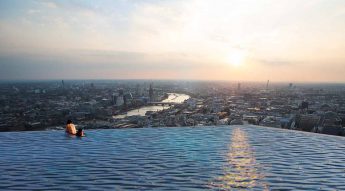
Computer controlled
Compass Pools UK is the distributor, designer and installer of ceramic composite swimming pools in the United Kingdom, and while their main business is the residential market, they also have a commercial division.
Their swimming pool designer and technical director is Alex Kemsley, who is the former president of the British Swimming Pool Federation and chairman of the British and Irish Spa and Hot Tub Association.
“The project started in 2017 as a proof of concept and an engineering project,” says Kemsley.
It quickly gained interest and they started talks with a “superlux” hotel chain and have gained prospects in both London and Dubai.
One of the questions to surface about this pool is how to keep the water from flowing over the edges and onto the street, 200 metres below.
There are two features that stop that from happening. The first is that the water level is controlled by a programmable logic controller (PLC) which receives a signal from an anemometer on the roof which monitors wind speed.
Kemsley says the PLC is similar to units on control lifts, roller coasters and other safety critical machine controls. The PLC in turn uses an algorithm to control the variable speed pump which will reduce the flow and drop the water level relative to the wind speed.
Additionally, there is a gully on the outside of the walls that will link to a balance tank two floors below, the same level as plant room. And failing that, if water still manages to spill it is unlikely to ever reach the ground, given the tapered nature of the pyramidal building.
“The building is tapered so it is several metres wider at the bottom,” says Kemsley. “So people on the ground are highly unlikely to get splashed.”
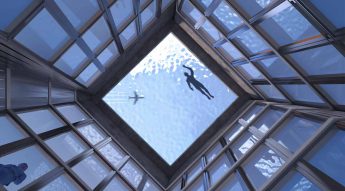
Submarine inspiration
The other big question about the pool is just how do you get into it, given there is no deck around it.
Kemsley found the answer by looking at submarines – particularly their interlock door system.
“There is a tube within a tube,” he says. “Inside the second tube is a spiral staircase. The first tube raises out of the pool floor on hydraulics The PLC drains the tube of water back into the balance tank. The spiral staircase comes out of the floor into what is now a dry tube, which allows people to get in and out.
“It is all linked to the PLC via an interlock and there are water sensors in the tube so the doors and mechanical devices can’t move unless the safety switch is triggered.”
He says this stops any chance of the building flooding, but if water does get to the wet floor below, it drains right through a 55-storey tube to the street below. He also says this is one of the safest building for fire rating, as it has an inbuilt reservoir.
A lifeguard will be in the pool with a waterproof radio. They will also control the staircase, letting people in and out in phases. There will also be an underwater drowning detection system with underwater cameras set up, and if it detects anyone in danger it will automatically trigger the staircase.
Regarding falling out of the pool, Kemsley says this no less or greater risk than any other building in the world – and that the 1.4m wall height is actually a foot higher than the UK prescribed standard height of 1.1 metres.
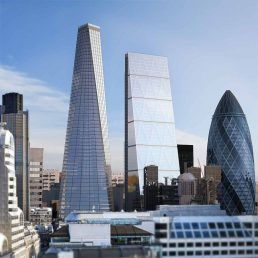
Energy saving
Boasting an innovative twist on renewable energy, the pool’s heating system will use waste energy from the air conditioning system for the building, similar to a system described in SPLASH! 123.
“The hot gas that is produced as a by-product of creating cold air in the building will run through a heat exchanger to heat the water for the pool,” he says.
Kemsley says architects have often come to him to design rooftop infinity pools, but he usually doesn’t get a say in the building design because the pool is often an afterthought.
“But on this project, we actually started with the pool design and essentially said, how do we put a building underneath this,” he says.
“When we designed the pool, we wanted an uninterrupted view, both above and below the water. The pool is also fitted with a full spectrum of lights which will give the building the appearance of a sparkling jewel-topped torch at night.”
Construction will kick off in 2020 once all partners and contractors are confirmed. Kemsley says potential investors and developers should feel free to contact him.
Contact: www.compass-pools.co.uk
Main image caption: Infinity London will be the first 360-degree skyscraper infinity pool. Images: Compass Pools UK



